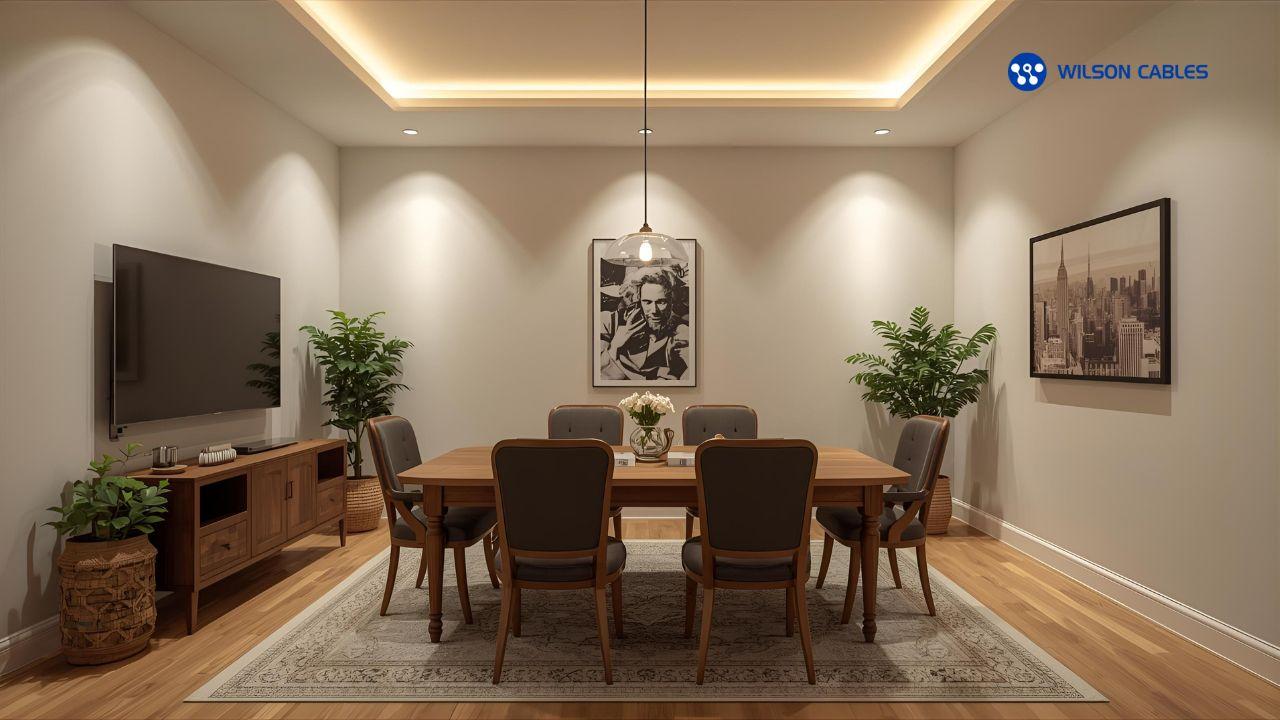
Proper lighting not only creates visual comfort, but also contributes to energy efficiency and the overall atmosphere of a room. Most people often choose lights based solely on brightness without considering the ideal lighting requirements for the size and function of the room. In fact, each room has different lighting requirements depending on the activities that take place within it.
Therefore, it is important for homeowners, interior designers, and electrical installation technicians to understand how to accurately calculate lighting wattage requirements. Knowing the wattage needed for a room helps avoid using lights that are too bright or too dim, while also optimizing energy savings. This article will help you understand the basics of calculating lighting wattage requirements and how to apply them to various rooms in your home.
Calculating light wattage is not just about aesthetics, but also related to comfort, safety, and energy efficiency. Lighting that is too dim can disrupt activities and cause eye strain, while light that is too bright can cause glare and energy waste. Understanding how much power (watts) is needed allows you to determine the most appropriate number and type of lights.
To calculate the power requirements for lighting in a room, you can use a simple formula:
Total lumens required = Room area (m²) x Lighting level (lux)
Total light power = Total lumens / Lumens per watt (lm/w)
Explanation:
The following are standard lighting levels (lux) based on types of residential rooms according to SNI-03-6197-2000:
|
Room |
Lighting Standards (Lux) |
|
Terrace |
60 |
|
Living room |
120 ~ 150 |
|
Dining room |
120 ~ 250 |
|
Workspace |
120 ~ 250 |
|
Bedroom |
120 ~ 250 |
|
Bathroom |
250 |
|
Kitchen |
250 |
|
Garage |
60 |
Let's calculate the power requirements for various types of rooms in the house:
For example, your terrace measures 3 meters x 6 meters = 18 m²
The ideal lighting level is 60 lux.
Using LED lights with an efficiency of 100 lm/w
Total lumens = 18 x 60 = 1,080 lumens
Power requirements = 1,080 / 100 = 10.8 watts
Therefore, you can use one 10-watt LED light or two 5-watt LED lights for more even lighting.
For example, your living room measures 4 meters x 5 meters = 20 m²
Ideal lighting level: 120 lux
Using LED lights with an efficiency of 100 lm/w
Total lumens = 20 x 120 = 2,400 lumens
Power requirements = 2,400 / 100 = 24 watts
This means you can use two 12-watt LED lights or three 8-watt lights for even lighting.
For example, a dining room measuring 3 x 3 meters = 9 m²
Ideal lighting level 120 lux
Using LED lamps with an efficiency of 100 lm/w
Total lumens = 9 x 120 = 1,080 lumens
Power requirements = 1,080 / 100 = 10.8 watts
Then, it is recommended to use one 10-watt LED lamp or two 5-watt LED lamps so that the light can be more evenly distributed.
For example, your workspace measures 2 x 3 meters = 6 m²
Ideal lighting level 120 lux
Using LED lamps with an efficiency of 100 lm/w
Use LED lights with an efficiency of 100 lm/w
Total lumens = 6 x 120 = 720 lumens
Power requirements = 720 / 100 = 7.2 watts
In this case, you can use one 7-8 watt LED light for your workspace.
For example, your bedroom measures 3 x 4 meters = 12 m²
Ideal lighting level 120 lux
Using LED lights with an efficiency of 100 lm/w
Total lumens = 3 x 120 = 360 lumens
Power requirements = 360 / 100 = 3.6 watts
The recommended lighting for a bedroom is 3 watts.
For example, a bathroom measuring 2 x 2 meters = 4 m²
Ideal lighting level 150 lux
Use LED lights with an efficiency of 100 lm/w
Total lumens = 4 x 250 = 1,000 lumens
Power requirements = 1,000 / 100 = 10 watts
Therefore, you can use one 10-watt LED light, especially above the mirror or main ceiling.
For example, a kitchen measuring 3 x 2 meters = 6 m²
Ideal lighting level 150 lux
Using LED lights with an efficiency of 100 lm/w
Total lumens = 6 x 250 = 1,500 lumens
Power requirements = 1,500 / 100 = 15 watts
If the kitchen requires bright light, you can use two 8-watt LED lights or one 15-watt light.
For example, your garage measures 3 x 5 meters = 15 m²
Ideal lighting level 60 lux
Using LED lights with an efficiency of 100 lm/w
Total lumens = 15 x 60 = 900 lumens
Power requirements = 900 / 100 = 9 watts
Thus, you need to use one 9-10 watt LED light or two 5 watt LED lights for more even lighting in your garage.
In addition to selecting the right lights, reliable electrical installations require safe and standard-compliant cables. Use high-quality electrical cables from Wilson Cables to ensure stable and interference-free power flow. Wilson Cables products are SNI-certified and designed for long-term durability in various conditions.
Calculating the power requirements of lights based on the size and function of the room is an important step in creating efficient and comfortable lighting. Follow these simple steps and understand the appropriate lighting standards to determine the ideal type and number of lights for each room in your home. Don't forget to use high-quality cables, such as those from Wilson Cables, for your electrical installation to ensure that your lighting system functions optimally and safely in the long term.